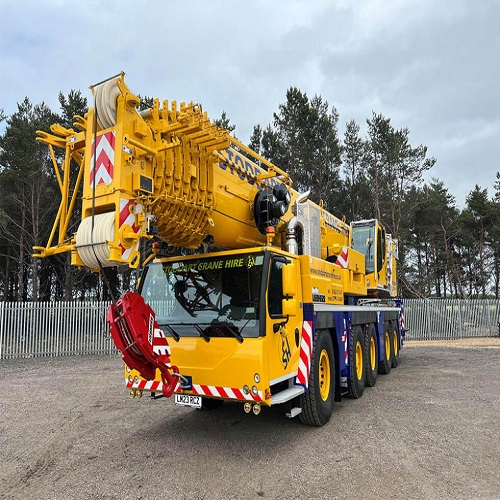
Selecting the right crane for a construction project can be a daunting task. With various types of cranes available, each suited for specific purposes, it’s crucial to make an informed decision.
This guide helps project managers and construction professionals choose the right crane, with advice from industry experts.
The Importance of Proper Crane Selection
Choosing the appropriate crane is more than just a technical decision. It can significantly impact:
- Project efficiency
- Safety on the job site
- Overall costs
- Timely completion of work
Let’s delve into the factors that should guide your decision-making process.
Types of Cranes:
Mobile Cranes:
Mobile cranes offer flexibility and ease of transport, making them suitable for various projects.
Best for:
- Short-term projects
- Sites with space constraints
- Jobs requiring frequent crane relocation
Companies like Stoddart Crane Hire offer mobile crane hire in Scotland, providing solutions for diverse project needs.
Crawler Cranes:
These track-mounted cranes excel in challenging terrains and heavy lifting scenarios.
Ideal for:
- Large-scale construction projects
- Unstable or uneven ground conditions
- Long-term use on a single site
Many crane hire companies, including Stoddart, provide crawler crane hire services for major construction endeavours.
Tower Cranes:
Essential for high-rise construction, tower cranes are a common sight in urban development projects.
Perfect for:
- Skyscraper construction
- Projects requiring constant overhead lifting
- Long-term, stationary use
Overhead Cranes:
Typically used in industrial settings, these cranes are mounted on a trolley that moves along suspended beams.
Suited for:
- Manufacturing facilities
- Warehouses
- Repetitive lifting tasks in a fixed area
Key Factors in Crane Selection
When choosing a crane, construction professionals should consider:
- Load Capacity: What’s the heaviest item that needs lifting?
- Lift Height: How high does the crane need to reach?
- Site Conditions: Is the terrain challenging? Are there space constraints?
- Project Duration: Is this a short-term job or a lengthy project?
- Mobility Requirements: Will the crane need to move around the site?
- Budget Constraints: What’s the allocated budget for crane hire?
- Local Regulations: Are there specific legal requirements to consider?
Common Pitfalls to Avoid
Industry experts highlight several mistakes that project managers should be wary of:
- Underestimating Load Weight: Always factor in a safety margin when considering load capacity.
- Neglecting Ground Conditions: Ensure proper ground preparation and support for the crane.
- Overlooking Overhead Obstacles: Be aware of power lines and other potential hazards.
- Compromising on Operator Skill: Experienced operators are crucial for safe and efficient crane operation.
Professional Crane Hire Services
When in doubt, it’s advisable to consult with professional crane hire companies. Firms like Stoddart Crane Hire offer:
- Expert guidance on crane selection
- Well-maintained, modern equipment
- Skilled operators
- 24/7 crane hire services for urgent needs
- CPA Crane Hire
Making an Informed Decision
Choosing the right crane involves careful consideration of various factors:
- Assess your specific project requirements
- Consider all relevant factors, from load capacity to site conditions
- Don’t hesitate to seek expert advice when needed
To pick the best crane for your project, project managers should follow these steps and use professional crane hire services. This not only enhances project efficiency but also contributes to a safer, more cost-effective construction process.
If you need a crane in Scotland, Stoddart Crane Hire can help.
They provide mobile and crawler crane hire, along with other lifting options, to help with your project and make it successful.
Remember, the right crane can be the difference between a project that soars and one that struggles to get off the ground.